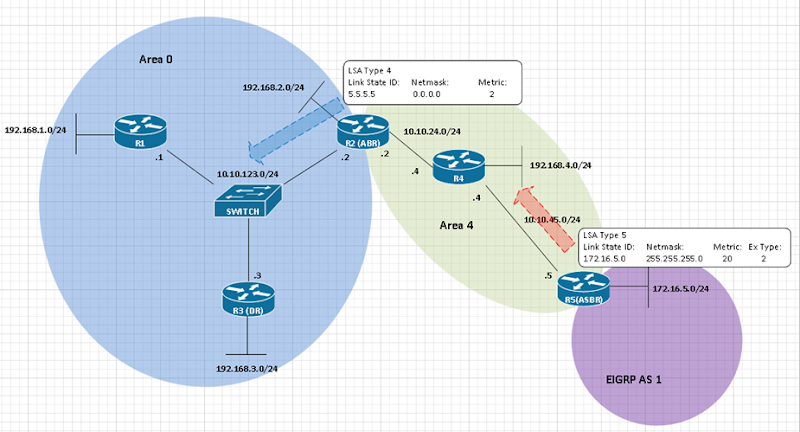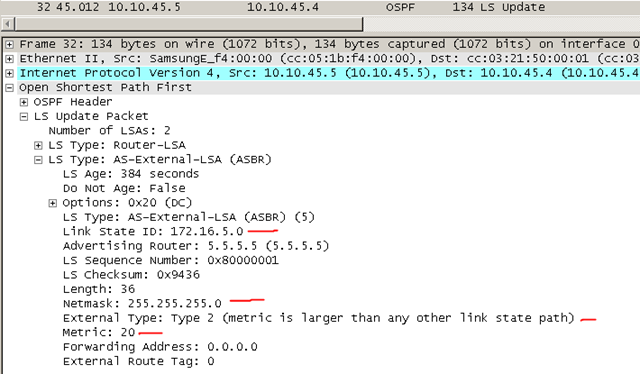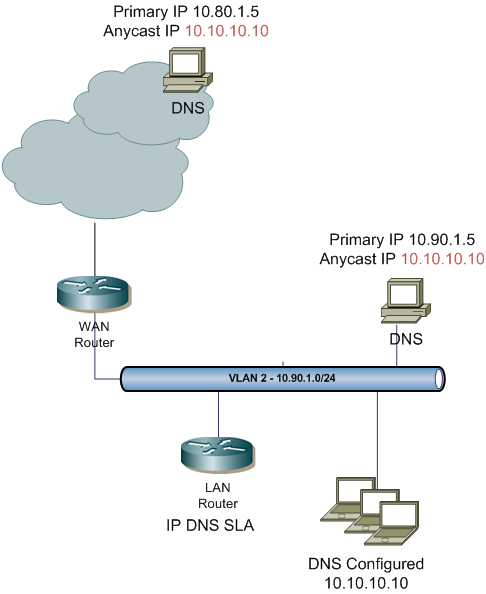Product & Routing Webinar: Multicast
Packet Design will be hosting a Product & Routing Webinar focused on Multicast on Wednesday, October 23 at 3pm CST. The event will feature Matt Sherrod, VP of Product Management, as its key speaker and will leave time after the live demonstration for Q&A.
OVSDB Echo in Python
I don’t mind coding in Java (i.e. OpenDaylight) but I wanted something quick and easy, so I’m writing a utility-esque script that sacrifices extensibility for speed. And since Python is something I’ve been meaning to stretch my muscles in, I decided to throw this together. Keep in mind that this can all be done by ovsdb-client natively via Linux command line, but I wanted to write it in Python to learn it, as well as provide it for a cool (technically) cross-platform language.OVSDB Echo in Python
I don’t mind coding in Java (i.e. OpenDaylight) but I wanted something quick and easy, so I’m writing a utility-esque script that sacrifices extensibility for speed. And since Python is something I’ve been meaning to stretch my muscles in, I decided to throw this together. Keep in mind that this can all be done by ovsdb-client natively via Linux command line, but I wanted to write it in Python to learn it, as well as provide it for a cool (technically) cross-platform language.OSPF Link State Advertisements (LSAs) and Areas – Part II
For a table describing the different LSA types, check out the first post of this series.
In the first part of the series, we looked at LSA Types 1, 2, and 3 – Router, Network, and Network Summary, respectively. To move on to the next two LSA types, we need to bring in another Autonomous System (AS). In the diagram below, we’ve added R5 which has an interface in EIGRP AS 1, and is redistributing that into OSPF Area 4. The fact that R5 has an interface inside of the OSPF AS, as well as the EIGRP AS, makes R5 an Autonomous System Boundary Router (ASBR).
The EIGRP-oriented subnet that is being redistributed is considered an external route to the OSPF domain, so a Type 5 LSA, or ASBR External, is flooded into OSPF Area 4 containing a LSID and netmask of the subnet, plus the External Type. This important because it tells other routers whether or not to add the internal link costs within the OSPF domain to the metric to reach that subnet. A type 2 external route specifies that only the external cost is taken into consideration.
When R2 catches wind of Continue reading
Making sense of Broadband networks – VLAN Model
In the previous post we discussed the major considerations of a broadband network architecture. Now I want to discuss each of those points one by one adding some details. I will do this quick and might not be able to provide illustrations or configuration examples all the time due to time limits, so if anything [...] No related posts. Related posts brought to you by Yet Another Related Posts Plugin.Understanding IPv4 uRPF on Junos DPC/MPC
uRPF allows anti-spoofing embedded at forwarding plane level. Junos provides this feature for many years with several modes and options: Loose or Strict mode Active or Feasible paths uRPF data base Discard or not supported in the uRPF data base I carried...Understanding IPv4 uRPF on Junos DPC/MPC
uRPF allows anti-spoofing embedded at forwarding plane level. Junos provides this feature for many years with several modes and options: Loose or Strict mode Active or Feasible paths uRPF data base Discard or not supported in the uRPF data base I carried...Understanding IPv4 uRPF on Junos DPC/MPC
uRPF allows anti-spoofing embedded at forwarding plane level. Junos provides this feature for many years with several modes and options: Loose or Strict mode Active or Feasible paths uRPF data base Discard or not supported in the uRPF data base I carried...Why so Rude?
The engineering world has a long standing tradition none of us should be too proud of: rudeness. There was, in fact, a time when I was working the phones on customer support that the general attitude was, “feel free to flame me when I ask a question, just answer the question in the flame.” Flames […]
Author information
The Importance of Setting Expectations
One of my first experiences dealing with a technology customer involved a request to deliver and install a new PC and printer. During the process I expected I would need to educate the user on the features of Windows 3.1. This was before I ever really started working in technology in a full-time capacity. While […]
Author information
The post The Importance of Setting Expectations appeared first on Packet Pushers Podcast and was written by Paul Stewart.
TCP Over IP Bandwidth Overhead
How long will it take to transfer a 100MB file over an IPSec tunnel running across a dedicated 100Mbps Ethernet link? 1 Second? Fail! 8s? You’re getting warmer. It’s almost 8.5s without the IPSec and over 9s with it. What’s the big deal with a 1s difference? Well, extrapolate that increase, let’s say it’s 13%, and […]
Author information
The post TCP Over IP Bandwidth Overhead appeared first on Packet Pushers Podcast and was written by Steven Iveson.
Healthy Paranoia Show 17: How Do I Pwn Thee?
Greetings fair ladies and kind sirs, I present yet another episode of Healthy Paranoia. In this episode we examine the notoriously mad, bad and dangerous to know; pentest dropbox. Joining Mrs. Y are some poètes maudits of the security realm, including; Taylor Banks, Dan Tentler, Kyle Stone, Nick Lennox and Jay James. A dropbox or […]
Author information
The post Healthy Paranoia Show 17: How Do I Pwn Thee? appeared first on Packet Pushers Podcast and was written by Mrs. Y.
Seven reasons VMware NSX, Cisco UCS and Nexus are orders of magnitude more awesome together
Note: This article was originally written for and published at the VMware Network Virtualization Blog. The following is a verbatim re-post of the original content. “VMware NSX, Cisco UCS and Cisco Nexus, TOGETHER solve many of the most pressing issues at the intersection of networking and virtualization.” Executive Summary VMware NSX brings industry-leading network virtualization capabilities to […]Packet Design to exhibit at Africa Com
Packet Design will be exhibiting at Africa Com 2013, Nov 12-14 in Cape Town, South Africa.
Register to attend the event here:
http://africa.comworldseries.com/register/
VRF Export Maps
VRFs are an excellent tool for maintaining segregated routing topologies for separate customers or services. I've previously covered inter-VRF routing using route targets, but what if we only want to export a subset of the routes within a VRF? Here's a scenario in which this would be desirable.

Customers A and B each have a site network and a colocation network, and both customers need access to the 192.168.0.0/24 network in the Services VRF. The customers must utilize unique IP space in order to prevent overlapping networks, so each customer has been allocated dedicated IP space from their common provider out o 10.0.0.0/8. Unfortunately, customer A is still has some networks within the 172.16.0.0/16. These networks need to access services in the host colo, but the service provider can't allow this space to be advertised into the Services VRF as it's not approved IP space.
Our goal is to export only the networks within the 10.0.0.0/8 space from the customer VRFs to the Services VRF. How can we accomplish this?
Let's have a look at the initial network state. (This lab was performed using a single router for Continue reading
Leveraging LISP for IPv6 internet connectivity
Introduction End hosts inside of the enterprise or home can be connected to the IPv6 internet using LISP’s powerful encapsulation mechanisms. This article is structured in three sections exploring the utilization of LISP as means of IPv6 internet connectivity. The first section dives into IOS LISP IPv6 configuration and verification of the control-plane/data-plane. The use […]
Author information
The post Leveraging LISP for IPv6 internet connectivity appeared first on Packet Pushers Podcast and was written by Pablo Lucena.
Exploring OSPF Messages in a Multi-access Network
The following network is configured with OSPF with all interfaces in area 0. Since this is a multi-access network, a Designated Router (DR) is elected which improves OSPF performance by reducing the amount of LSA flooding. R3 is the current DR, with R2 as the BDR. R4’s interface to SW1 has been configured as a passive interface to prevent an adjacency from forming and simulate R4 being a “new” router on the network. Wireshark is monitoring the link between R4 and SW1.
I won’t go into all the details regarding Wireshark output and the OSPF process. If you want a more detailed analysis, take a look at my previous blog article here. In this article, we’ll only be taking a closer look at what happens specifically in a multi-access environment.
Upon re-enabling R4’s interface for OSPF, we see R4 sends a Hello packet to the All OSPF Routers multicast address (224.0.0.5) and that no DR or BDR is listed. R4 is “new” to the network as far as OSPF is concerned, so it has no idea about the current topology.
R1, R2, and R3 all send Hello packets with the Continue reading
OSPF Link State Advertisements (LSAs) and Areas – Part I
If every router in an enterprise environment was in a single OSPF area, at some point you’re going to encounter scalability issues due to any changes in the environment causing an SPF recalculation in all routers in that single area.
LSAs and their use within areas provide a mechanism for maximizing performance in OSPF by logically segmenting groups of contiguous links so that every router in the entire autonomous system does not have to have exact copies of the Link State Database (LSDB) and to reduce the amount of LSA flooding. SPF calculations are also isolated to each individual area rather than the entire environment. Different LSAs are used in different situations, and are treated differently depending on the type of OSPF area involved.
The following table represents the different LSA types, and was taken from the CCIE R&S OCG.
| TYPE | NAME | DESCRIPTION |
| 1 | Router | One per router containing its RID and all interface IP addresses; also represents stub networks. |
| 2 | Network | One per transit network. Created by the DR and represents the subnet and router interfaces connected in the subnet. |
| 3 | Network Summary | Created by Area Border Routers (ABRs) to represent one area’s type 1 and Continue reading |
Anycast DNS with IP SLA DNS
Recently I came across an idea to implement anycast DNS within an enterprise environment. The concept is similar to Google’s public DNS, but at an enterprise level. Using IP SLA DNS, a static tracked route and some redistribution it makes it an easy solution. The biggest benefits is that all internal clients can use the same DNS IP address no matter what locations they reside in; additional benefit is distributing the load when DNS attacks occur.
First you’ll have to configure the Cisco’s IP SLA. Using the DNS feature is much better than just ICMP. It will actually verify that the DNS server is responding to a specified query. In my example below I’m using a query for test001dns.me which is configured on the server as an A record. The DNS query is sent to a distinct IP address of the server 10.90.1.5. All local DNS server have two IP addresses: distinct and anycast. The anycast address is configured as a secondary IP (10.10.10.10) a numerous DNS servers throughout the enterprise.
Below is the IP SLA configuration using the DNS feature. It is configured on a LAN router.
ip sla 10 dns test001dns. Continue reading
IPv6 First-Hop Security
How does the internet work - We know what is networking
All methods to mitigate IPv6 security issues Real life security intro I the process of configuring our corporate network test segment for IPv6 support there was direct demand to pay particular attention to security. In few weeks it was my mayor role to go trough all materials I could get in order to learn more […]




